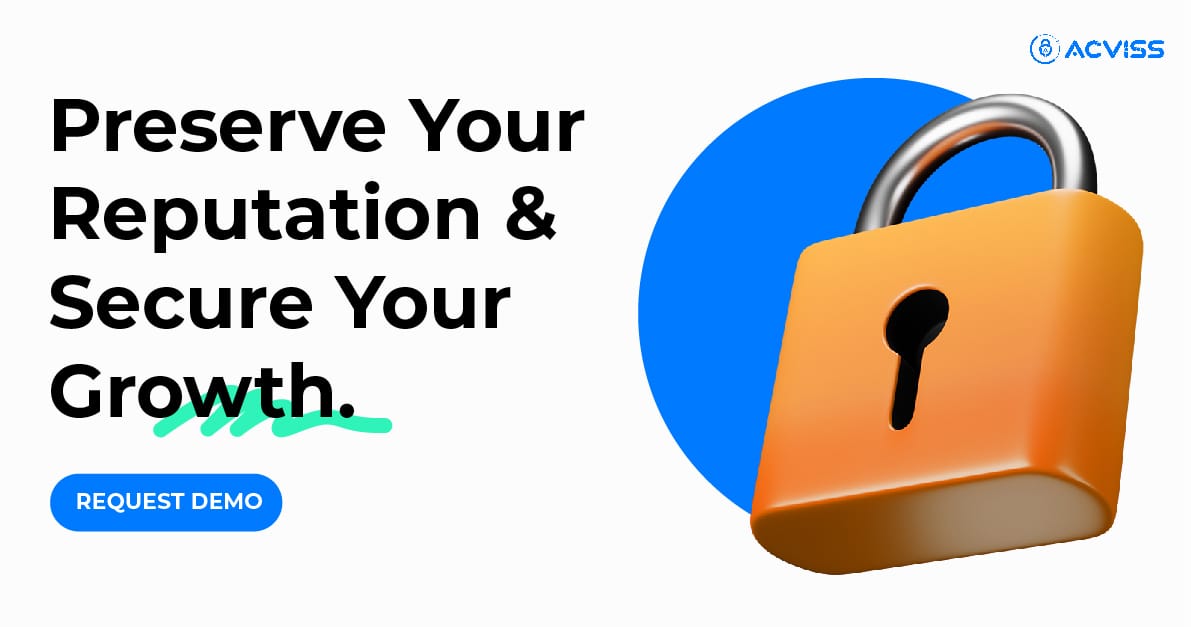Offline Customer Acquisition Is Expensive And How Brand Authenticity Can Fix It

Over the past few years, many brands have experienced a significant increase in their offline customer acquisition cost (CAC), which encompasses all expenses incurred by a brand to acquire a new customer in person through tactics such as in-store promotions, live events, and print ads.
This expense includes venue rental, staff wages, printed material costs, product sampling costs, and ads and local promotions such as billboards. As these costs rise, profit margins diminish and overall growth slows.
In this article, we will explain why offline CAC is increasing and how brand authenticity can bring those costs down. We will cover strategies like brand reputation management, trademark enforcement, grey market control, product verification for customers, customer loyalty programs, QR code security, and machine learning for fraud detection.
Why Offline CAC Is Increasing
1. Increasing Operational Costs
Physical marketing involves using physical resources. Renting space for venues and booths, compensation for staff, printed flyers, and the logistics all cost money. Rent for booths and retail space has risen in many metro areas.
2. Consumer Scepticism
Today’s customers regularly do a pre-visit search before visiting a store or event. If a brand's website and social media aren't what they expected, they may withhold business. A flyer, a free product sample, or a discount may not cut it.
3. Fakes and Counterfeit Goods
Fake goods erode trust. When customers buy and have a poor experience with a fake version of a product, they blame the brand. Brands will often want to pursue legal action, invest in anti-counterfeit packaging, or develop customer education campaigns.
4. Heightened Competition
Whether a trade show, an event, or a busy strip mall, each brand is competing to stand out with each passing minute. Companies are renting bigger displays, building fancier booths, or giving away more products as part of a promotion. This "arms race" drives up the cost of everything.
How Brand Authenticity Helps Reduce CAC
1. Strong Brand Reputation Management
With a solid reputation comes customer trust in a brand even before seeing an in-store promotional gimmick. Effective brand reputation management includes:
- Paying attention to Feedback: By utilising social listening tools and review sites, all talking about what customers have been saying.
- Responding promptly: Publicly addressing negative feedback and complaints honestly.
- Sharing Positive Stories: Publicly sharing legitimate user experiences and behind-the-scenes material.
With existing customer trust in a brand, customer purchases can often be made off of flyers or in-store display pieces. Customers are more likely to purchase in this scenario without onerous sampling programs or over-the-top signage. Hence, reduced offline CAC.

2. Originality Existence through Trademark Enforcement
Counterfeits create distrust amongst customers. When buyers purchase a fake product, they blame the actual brand. The following is outlined for trademark enforcement:
- Obtaining Registered Trademarks: To establish legal ownership in the relevant markets.
- Monitoring Online Marketplaces: To search for unauthorised selling listings in e-commerce.
- Collaborating with Relevant Authorities: Work with Customs and/or any form of law enforcement to seize counterfeits.
- Educating Customers: To provide examples to be able to identify genuine products.
When counterfeits have been eliminated, customers will feel more comfortable making purchases from offline retailers. Reducing the need to convince them, resulting in decreased offline CAC.
3. Controlling the Grey Market
The grey market sells genuine products outside of authorised channels, usually at a lower price or with some other advantage for the buyer. Any savings come without warranties or support that would normally come with authorised channels. This is confusing for customers and eats into revenues. Brands can establish control over the grey marketby:
- Establishing Minimum Prices: All dealers must be under a pricing policy.
- Publishing Lists of Authorised Dealers: Make it easy for customers to find the seller's authorised outlet.
- Tracking distribution: Software tracing products from the factory to the dealer.
- Promoting Official Support: Focus on warranty benefits and customer service initially associated with official purchases.
When customers see more value in buying from an official dealer, they will be less inclined to play to buy grey market bargains. Brands can therefore maintain slightly less severe discounts through lower promotions, and a reduction in offline CAC will result.
4. Adding Trust with Product Verification for Customers
Customers feel secure when able to verify the authenticity of a product. Brands can offer product verification for customers:
- Unique Codes on Packaging: Customers put the code in on the brand website.
- Mobile Verification Apps: An App that scans QR codes or barcodes that confirm authenticity.
- Tamper Evident Seals: Packaging that gives an indication if open, but authorised.
- Verification Hotlines or Chatbots for Customers: Allows customers to verify the serial number or batch number.
When shoppers can quickly confirm a product is real, they decide faster. In-store staff can demonstrate the process, reducing the need for expensive demos or free samples, thus lowering offline CAC.
5. Building Loyalty Through Authentic Customer Loyalty Programs

Customer loyalty programs drive repeat purchases and increased lifetime value. Yet, rewards fraud can diminish trust. To foster true loyalty:
- Keep It Simple: Make your terms very clear so customers understand how to earn and spend rewards points.
- Offer Real Value: Create meaningful savings, privileged products, or special experiences.
- Live Brand Values: For example, if you are a sustainable brand, offer customers sustainable gifts.
- Facilitate Security: Protect against fraudulent activity and fake accounts by employing measures to avoid these cases.
Cost per repeat customer is almost nothing compared to the acquisition of new customers. A good loyalty program generates word-of-mouth marketing, creating a lower offline customer acquisition cost. A verified loyalty rewards program using the Acviss Bonus solution can work best here.
When it's about building customers' loyalty towards the brand, the bonus solution provided by Acviss works the best:
- Clear Fraud Prevention: Machine learning for fraud detection algorithms flags any indications of suspicious activity by creating an instantaneous algorithm that proactively prevents instances of multiple accounts with different means of using them or fraudulent redemptions with machine learning.
- Verified Secure Purchase: Recording purchases by customers is confirmed via uploaded scanned receipts or product codes provided by suppliers before the customer can earn any points.
- Real-Time Alerts: Will send alerts to administrators in real-time when potential fraud is detected, allowing for quicker management.
- Harmonised Systems: There is no new system to install - most retailers already use POS platforms, but most don't understand they can use their existing systems to create a Web3 metaverse loyalty program.
Brands using the Acviss Bonus Solution see higher engagement and lower fraud. For instance, a fashion retailer reported a 20 per cent rise in sign-ups and a 5 per cent drop in loyalty fraud within six months. The improved trust led to more in-store visits, reducing offline CAC by 10 per cent.
Practical Tips for Brands to Reduce Offline CAC
1. Put Money Into Brand Reputation Management
- Utilise review sites, social listening, and customer feedback solutions.
- Be responsive and transparent with all engagements.
- Unveil actual customer experiences and share behind-the-scenes content.
2. Implement Strong Trademark Enforcement
- Register trademarks in all primary countries.
- Use monitoring services to find counterfeit product listings online.
- Use customs and laws to remove counterfeit products.
- Give customers a simple visual guide to see genuine products.
3. Improve Grey Market Control
- Engage distributors to establish minimum advertised prices.
- Post and maintain a list of authorised distributors.
- Track product to retail shelf with RIFD or blockchain.
- Be explicit at the sales point with warranty benefits and official support.

4. Make Product Verification Easy for Customers
- Place forgettable codes or secure QR codes on all product packaging for instant look-ups.
- Provide a mobile app that verifies authenticity.
- Use tamper-proof seals or holograms for product authenticity.
- Provide the customer with a phone number or a chatbot for questions relating to authenticity.
5. Create Authentic Customer Loyalty Programs
- Keep rules simple and transparent so customers understand how to earn and redeem points.
- Offer rewards that align with brand values, like eco-friendly gifts for sustainable brands.
- Use the Acviss Bonus to prevent fraud and ensure points go only to real customers.
- Communicate program benefits and updates clearly and consistently.
6. Upgrade to Secure QR Code Security
- Use dynamic or encrypted QR codes that change or verify against a secure server.
- Place codes in visible yet tamper-proof spots on packaging.
- Add multi-factor verification to give customers extra confidence.
- Train staff to assist customers in using QR codes.
Conclusion
As offline customer acquisition cost (CAC) continues to rise, brands must find smarter, more cost-effective ways to win customers. Brand authenticity offers that path. When brands invest in brand reputation management, trademark enforcement, grey market control, product verification for customers, and customer loyalty programs with tools like the Acviss Bonus Solution, as well as QR code security and machine learning for fraud detection, they build trust.
Trust reduces hesitation, shortens decision times, and encourages repeat purchases. A genuine brand lowers offline CAC and lays the groundwork for long-term loyalty and advocacy. Customers remember how a brand made them feel. Staying true to core values and offering proof of authenticity keeps customers coming back, both online and offline.
Learn more about improving customer experience and how to build trust in the market for better customer lifetime value and increased retention rate. Get in touch with us today!
